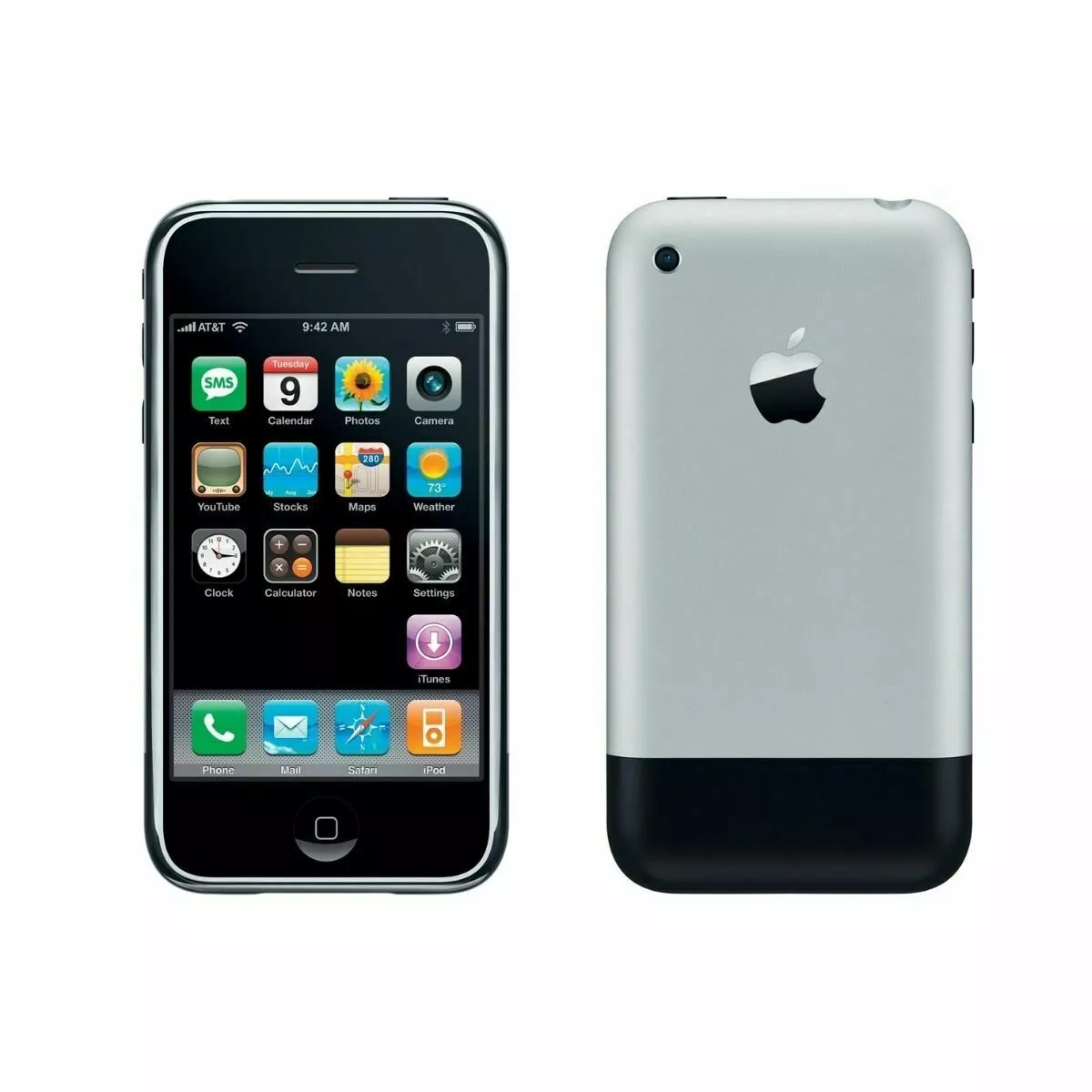When Apple Inc. introduced the iPhone in 2007, it marked a significant moment in mobile phone history. The device was the result of years of speculation and development, finally revealed by Steve Jobs in early January that year. It set the stage for a new era of smartphones, combining a phone, an iPod, and an internet communicator into one.
The design of the first-generation iPhone broke away from the keypad-centric phones of the time. It featured a large touchscreen interface which was novel for mobile phones. Apple’s commitment to a user-friendly design with intuitive navigation reshaped consumer expectations for smartphones.
With its official launch on June 29, 2007, the iPhone became a game changer for mobile technology. It was not merely a new gadget but a cultural phenomenon that influenced how people interacted with technology and each other. It also paved the way for numerous applications that have since become integral to daily life.

The Dawn of the Smartphone Era: Unveiling the iPhone First Generation
A Revolutionary Device
The original iPhone, unveiled by Steve Jobs on January 9, 2007, redefined the mobile phone industry. It combined a mobile phone, an iPod, and an internet communicator into one sleek device. This groundbreaking innovation marked a turning point in technology and set the stage for the modern smartphone era.
Design and Display
The iPhone’s design was sleek and minimalist, featuring a glass front and an aluminum back. Its 3.5-inch touchscreen display was considered large for its time and utilized innovative multi-touch technology. The absence of a physical keyboard allowed for a larger screen and intuitive user interaction.
Software and Features
The first iPhone ran on iPhone OS (later renamed iOS), a user-friendly operating system designed specifically for touchscreens. It introduced features like visual voicemail, Safari web browser, and the App Store, which opened up a world of possibilities for users to customize their devices.
Hardware and Performance
Powered by a Samsung 32-bit ARM processor and 128MB of RAM, the iPhone was a powerhouse for its time. It featured a 2-megapixel rear camera and a built-in accelerometer for screen orientation. However, it lacked 3G connectivity and had limited storage options.
Specifications
| Specification | Details |
|---|---|
| Display: | 3.5-inch LCD touchscreen (320 x 480 pixels) |
| Processor: | Samsung 32-bit ARM 412 MHz |
| RAM: | 128MB |
| Storage: | 4GB, 8GB, or 16GB |
| Camera: | 2-megapixel rear camera |
| Battery: | 1400mAh |
| Operating System: | iPhone OS 1 |
| Connectivity: | Wi-Fi, Bluetooth 2.0, EDGE |
| Dimensions: | 115 x 61 x 11.6 mm |
| Weight: | 135 grams |
Legacy and Impact
The first iPhone’s impact on the technology landscape cannot be overstated. It revolutionized the way we communicate, access information, and consume media on the go. Its intuitive interface and innovative features paved the way for the modern smartphone as we know it today. The iPhone’s success also propelled Apple to become one of the most valuable companies in the world, solidifying its position as a leader in consumer electronics.
Key Takeaways
- The iPhone was introduced in 2007, launching a new smartphone era.
- Apple’s focus was on the user experience with a revolutionary touchscreen.
- The impact of the iPhone was profound, shaping modern mobile communication.
Development and Design
The iPhone’s inception was a well-kept secret at Apple, driven by Steve Jobs’ vision for a revolutionary phone. This section explores the journey from the early development stages to the unique design aspects that defined the first iPhone.
Concept and Project Initiation
Apple’s internal project, codenamed “Purple,” began around 2005. It aimed to create a phone with a touchscreen interface capable of sensing multi-touch gestural inputs. Jobs led the development team in rethinking the phone as a handheld computing device.
Collaboration with AT&T and Manufacturing
Apple collaborated closely with AT&T for exclusive tie-ins in the US. Samsung supplied critical components like the processor, while other partners worked under strict confidentiality to bring the iPhone to life. The manufacturer, Foxconn, played a significant role in assembling the device.
Design Philosophy and Aesthetics
The design of the first iPhone was groundbreaking. It featured a sleek, minimalist aesthetic with a single home button and a 3.5-inch display. The intention was clear: to make a user-friendly device that was also beautiful. The result was a product that stood out among the cluttered designs of other phones.
Launch and Impact
The first iPhone hit the market on June 29, 2007, forever changing the mobile phone landscape. From the way we communicate to the growth of app-based interactions, the impact was immediate and widespread.
The Unveiling on June 29, 2007
Apple Inc. introduced the original iPhone in 2007, naming it iPhone 2G. This device was the first of its kind from Apple. It set a new standard for smartphones. The iPhone offered a touch screen and an intuitive interface. It made its mark with its usability. AT&T was the exclusive carrier for this revolutionary device in the United States.
Market Disruption and Industry Response
The launch of the iPhone marked a significant shift. It affected how other phone manufacturers designed and developed their products. Giants like Motorola and BlackBerry, who once led the field, faced a new challenge. They needed to adapt or fall behind. The iPhone’s ability to combine phone, iPod, and internet communicator in one device was unique. Its capacity to run a variety of applications through the eventual introduction of the App Store in 2008 became a game changer for mobile phones.
Legacy and Discontinuation
Apple declared the first generation iPhone obsolete in June 2013. Yet its legacy is profound. It paved the way for subsequent iPhone models like the iPhone 3G, iPhone 3GS, and beyond. These newer models offered improved features and functionality. The original iPhone’s design and concept set the stage for later favorites like iPhone 4 and iPhone 5, and even influenced the compact, yet powerful iPhone SE. Despite its discontinuation, the original iPhone’s influence on smartphone design and technology remains undeniable.







